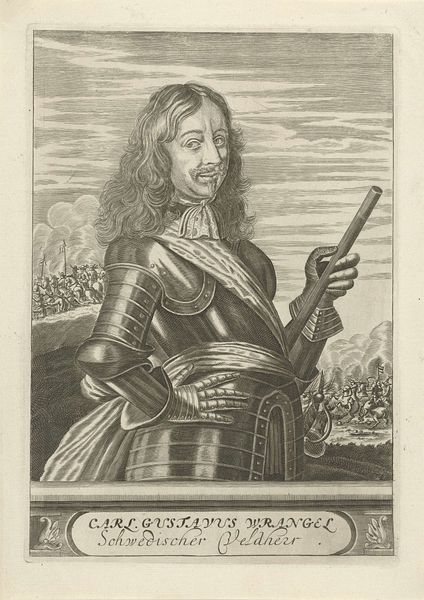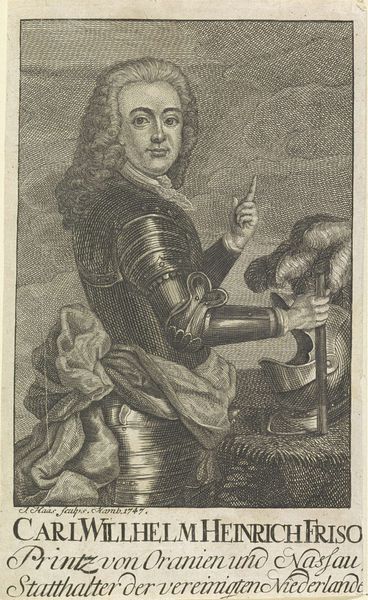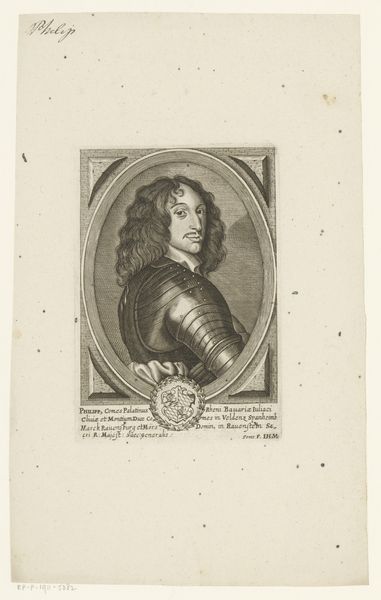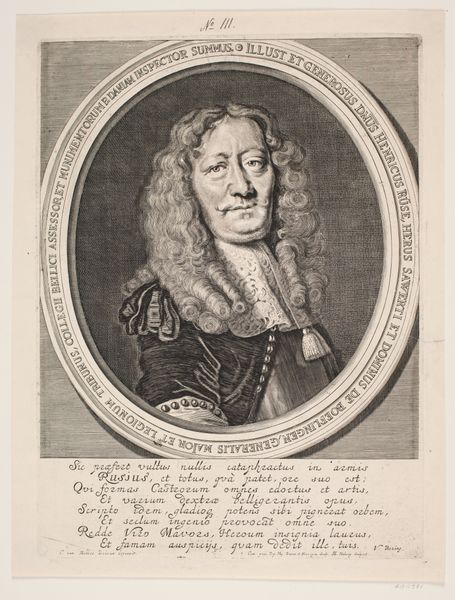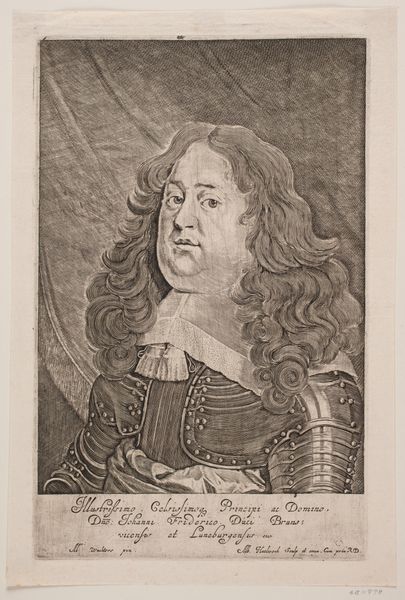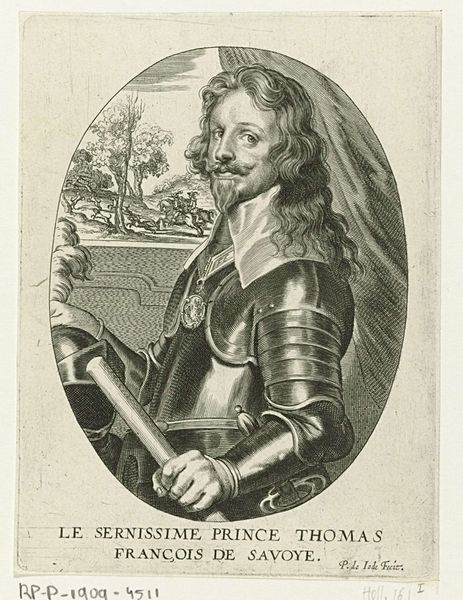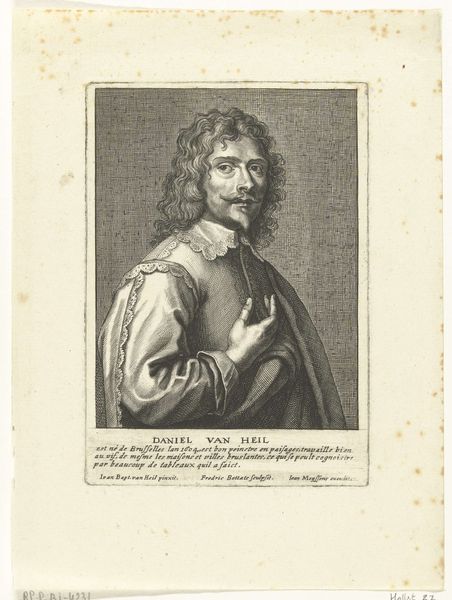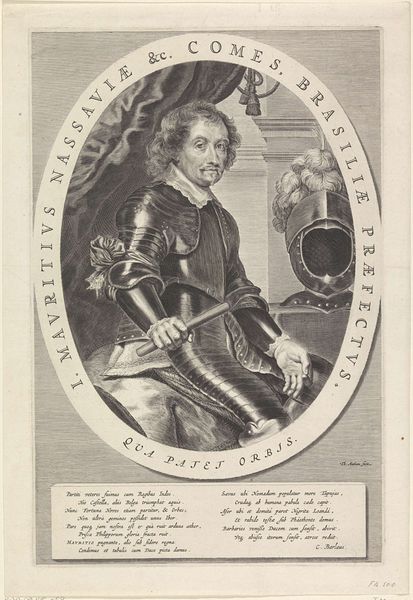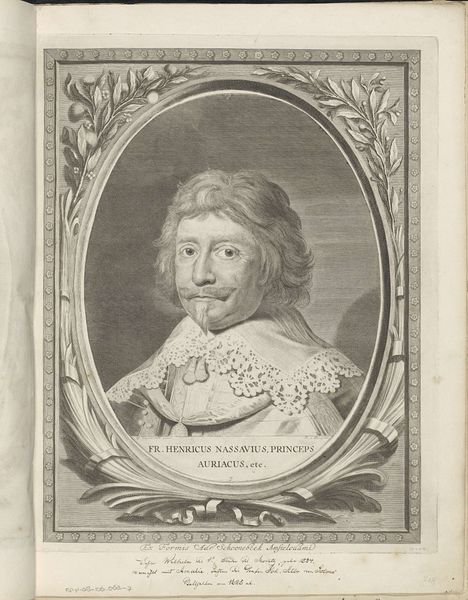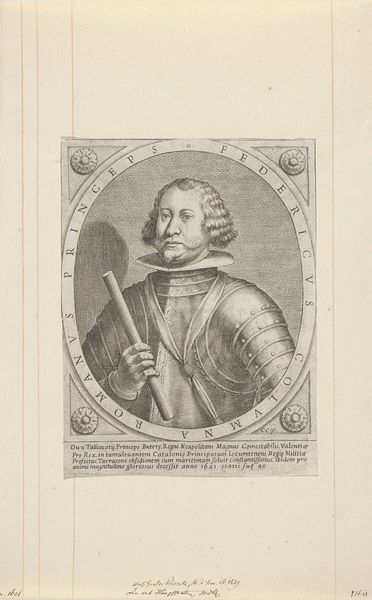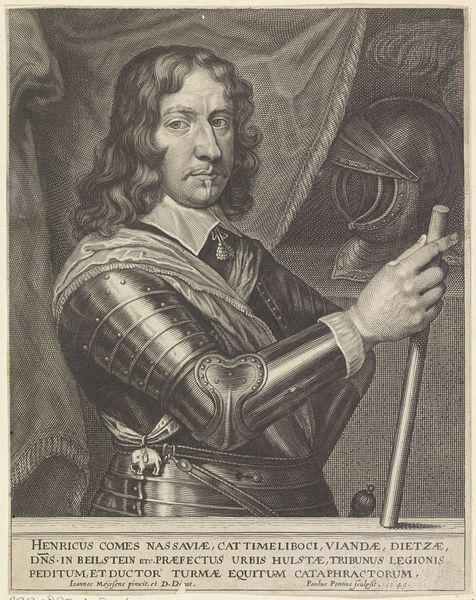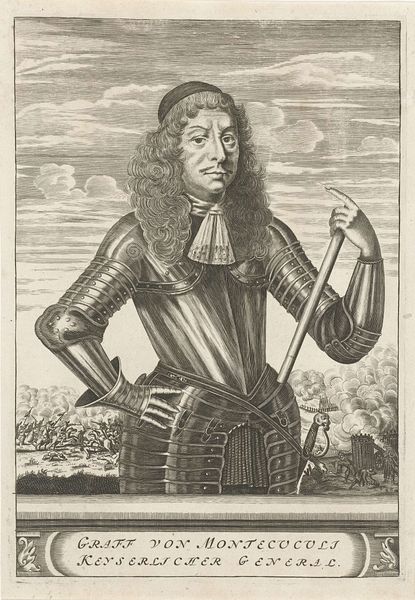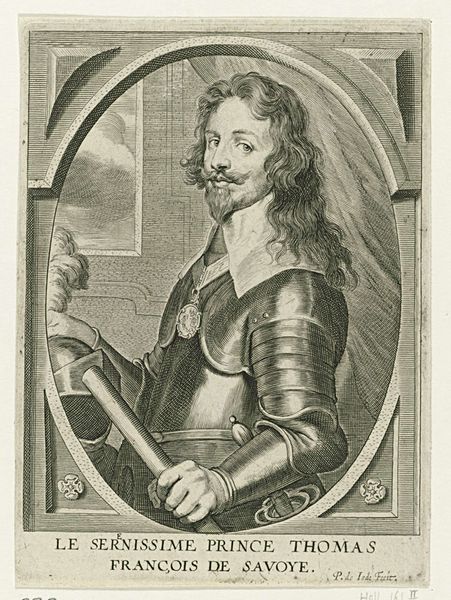
Portret van Tommaso Francesco, prins van Savoye-Carignano Possibly 1630 - 1646
0:00
0:00
print, engraving
#
portrait
#
baroque
# print
#
old engraving style
#
figuration
#
line
#
history-painting
#
engraving
Dimensions: height 235 mm, width 184 mm
Copyright: Rijks Museum: Open Domain
Curator: Here we have "Portret van Tommaso Francesco, prins van Savoye-Carignano," a print possibly dating from 1630 to 1646, currently residing here at the Rijksmuseum. It was created by Paulus Pontius. Editor: The first thing that strikes me is the contrast. There is a certain austerity in the lines, yet a real weightiness is created with all the dark areas suggesting dignity, formality. Curator: That inherent tension certainly embodies the Baroque style, with its characteristic blending of drama and realism. It portrays Tommaso Francesco, Prince of Savoy-Carignano, who played a significant role as a military commander during that period. The engraving style, all fine lines, captures both the rigid armor he wore into battle, as well as a softer expression that speaks to court portraiture and the expectations around princely appearance at the time. Editor: I'm fascinated by his armor. Beyond its literal function, what did it signify? What messages about power, identity, and status were conveyed through its visual representation in an era of shifting alliances? Curator: Indeed, his armor isn’t simply protective gear; it’s a potent symbol of his military prowess, inextricably linked to the political landscape. To be portrayed in full military attire reinforces his position, presenting him as a capable and authoritative leader ready to defend his realm. But it also is meant to create that perfect balance between his place as royalty, and commander on the battleground, between strength and intelligence. Editor: Absolutely, the scepter too, but what about the subtle symbolism? What of his soft curls juxtaposed against the rigid steel? How does that affect the meaning we create from the artwork as a whole? Curator: The choice to depict him with softer features does soften his overall image. By combining both elements of battle and a softened humanity, the piece presents a layered portrait of Tommaso as both military commander and noble, fitting into broader understandings of masculinity in the period. Editor: Looking closely has enriched my understanding of both Tommaso's place in history, but also of how constructed imagery communicates lasting symbolic meanings. Curator: Agreed. This close look highlights the many, sometimes competing, functions of representation: How images become lasting embodiments of power.
Comments
No comments
Be the first to comment and join the conversation on the ultimate creative platform.
